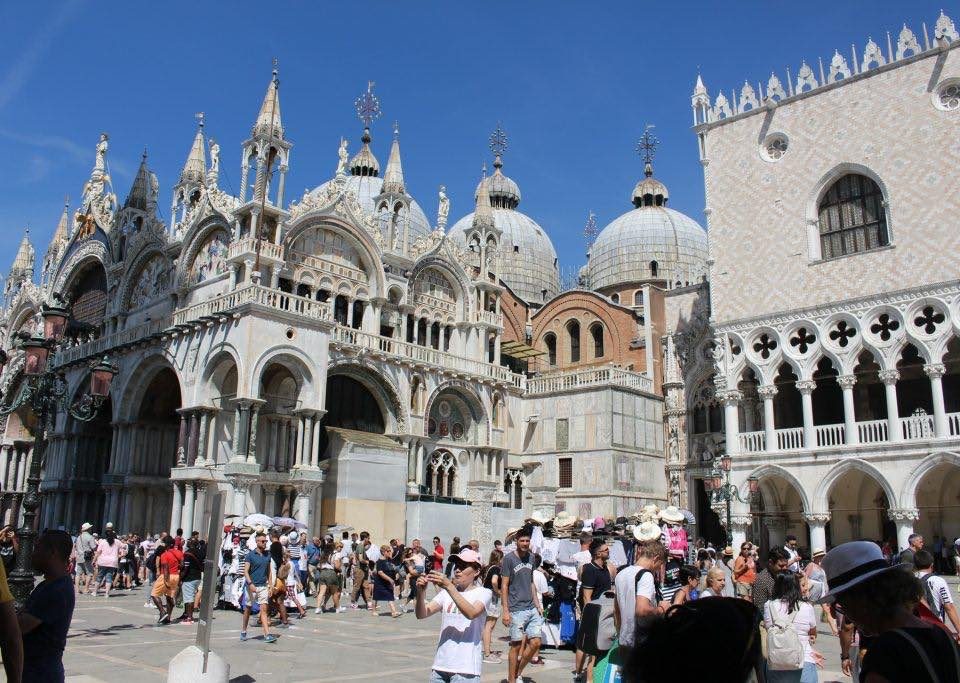1. Digital nomads during the Covid-19 era
The Covid-19 pandemic is accelerating the trend of digital nomads; this might be a boon for struggling tourist destinations who have seen a sharp decrease in leisure travel numbers.
The term “digital nomad” began to be used back in 2014, when freelance workers started heading to cheap destinations in southeast Asia or eastern Europe to work from there.
Living the life of a digital nomad was a dream for many people, thought possible only for a small niche group. But during the pandemic this has changed a bit. In just a few months, remote working became culturally accepted even in those fields where it was unimaginable before. Now most people have realized that they do not need to work from their office… And not even from their home.
Some tourist destinations are shaping their offer in order to attract the new-born digital nomads. By focusing on this new market, they are trying to mitigate the negative effects caused by a steep decline in short-term leisure tourism.
Nowadays, going to a place for only a few days is not worth the effort of getting tested on arrival, and possibly undergo a quarantine. Thus, the idea is to invite travelers to spend some months in the destination.
2. The case of Bermuda
One example is Bermuda. The country reopened its borders on July 1, but is requesting all travelers to get tested on arrival.
Glenn Jones, interim CEO of the Bermuda Tourism Authority, said that the tourism industry is experiencing a decline of people coming only for the weekends, while long stays of weeks or months are increasing. Some travelers are “not even sure when they’re going to go back. That was a whole new ballgame for us,” he added.
On August 1, the Bermuda government launched an online application to get the “Work from Bermuda Certificate Program”. The certificate, which is open to visitors for up to one year, is an adaptation of an existing residency program. During the application, which has a cost of $263 per person, all applicants must provide proof of healthcare insurance or that they can afford to pay for a care package in Bermuda.
According to Jones, the digital nomads are a sort of hybrid between visitors and residents. They can be considered migrants, but, at the same time, they will use tourism services. This is why the Tourism Authority and the Department of Immigration have to collaborate together.
3. The case of Estonia
During the past decade, Estonia has promoted itself as an international tech and startup hub, attracting top tech talents who perfectly fall under the digital nomad category.
Karoli Hindriks, founder of Estonian startup Jobbatical, has been trying for years to create something just like the “Work from Bermuda Certificate Program”.
Jobbatical helps European startups simplify the immigration process for the people they hire. For this reason, in 2016, Hindriks proposed the creation of a digital nomad visa to Estonian President Kersti Kaljulaid. The visa makes it easier for tech workers to temporarily live and work in Estonia.
Applications for the visa opened on August 1. However, Estonia has opened its frontiers only to some nationalities. Currently, American applicants would not be able to use the visa due to Covid-19 travel restrictions.
According to Hindriks, the Covid-19 pandemic has made the idea of a digital nomad visa more important than ever.
“Once the pandemic will be over, a lot of people would have realized that they can work remotely wherever they want and also their employers would know that they can work remotely,” she said.
Now anybody can be a digital nomad, not only freelancers, but also salaried workers.
But the new digital nomads will face a problem: most countries require remote workers to get a resident permit if they want to stay for a medium-term length of time. Some digital nomads have tried to solve this problem by entering the country on tourists’ visas, and then moving to another location once things become problematic. But now that the possibility to work remotely is open also to corporations’ workers, this approach is not going to work anymore.
Hindriks explains that so far there are no clear regulations on remote working. And this is a big missed opportunity for countries willing to attract top talents and to benefit from digital nomads as tourists’ substitutes.
Georgia and Barbados are also working on a digital nomad visa scheme. It is not surprising that both countries are heavily dependent on tourism.
4. Nomad List
Nomad List is a popular website launched in 2014 that includes the best destinations for digital nomads. The website helped the digital nomad movement gain importance.
According to Pieter Levels, the founder of the website, the pandemic is accelerating the nomad trend even more.
He said that once people start to work remotely, they have the possibility to work from home; then, they’ll start working outside their houses – such as in a café – and later on, they’ll want to work in another country as they were on holiday. During this final step, many remote workers might consider changing their lifestyle and keep working from different destinations.
Back in 2015, Levels predicted that the number of digital nomads would grow up to one billion by 2035. This prediction, which seemed quite impossible at that time, is now actually very probable.












